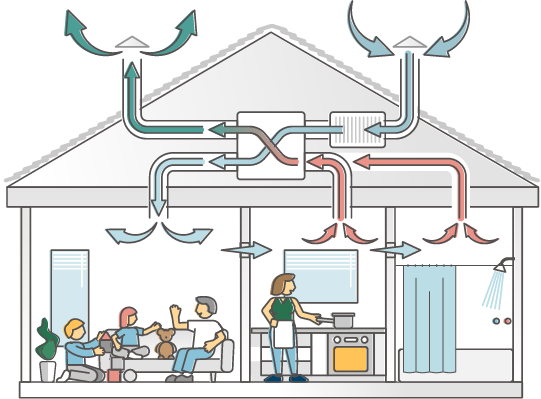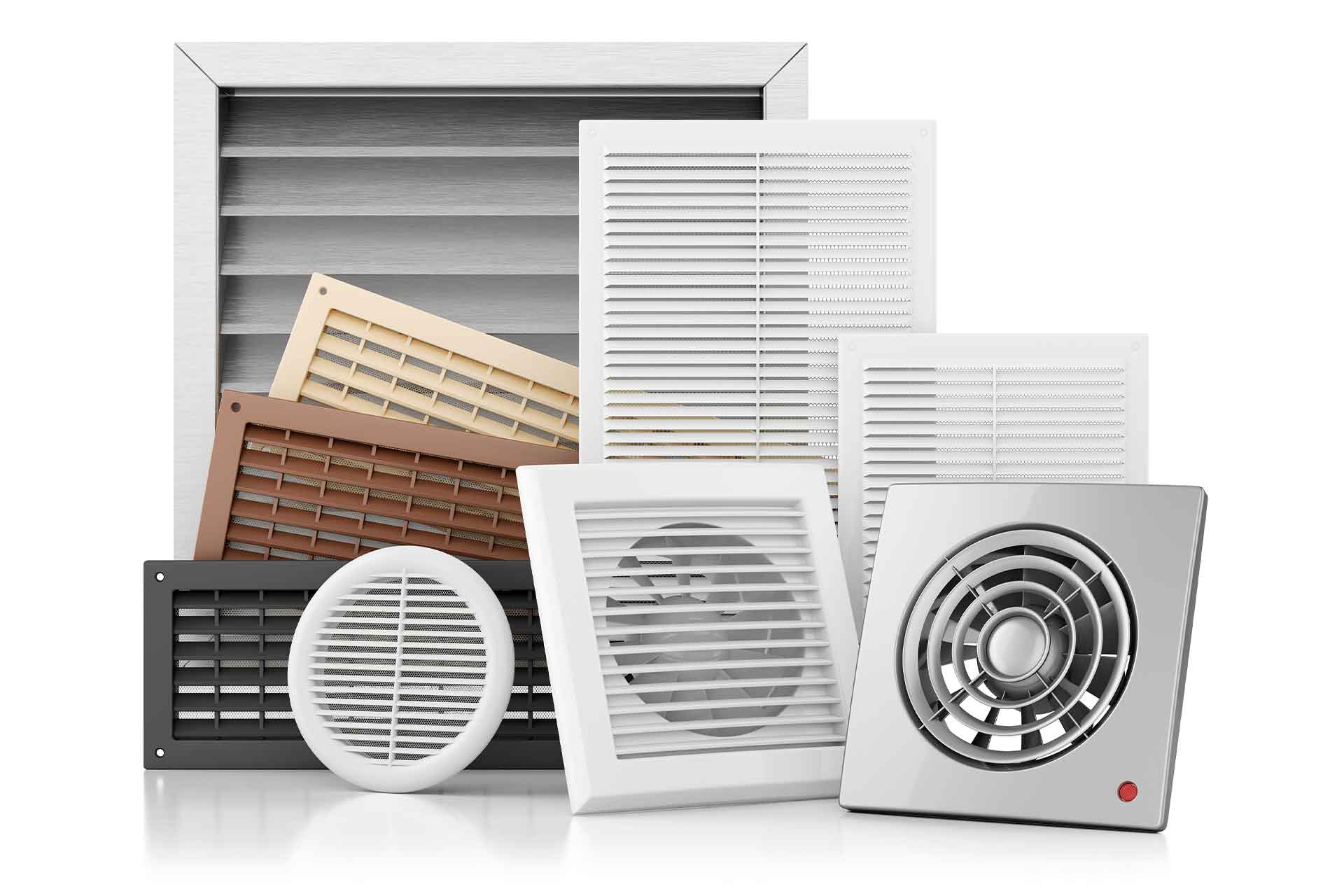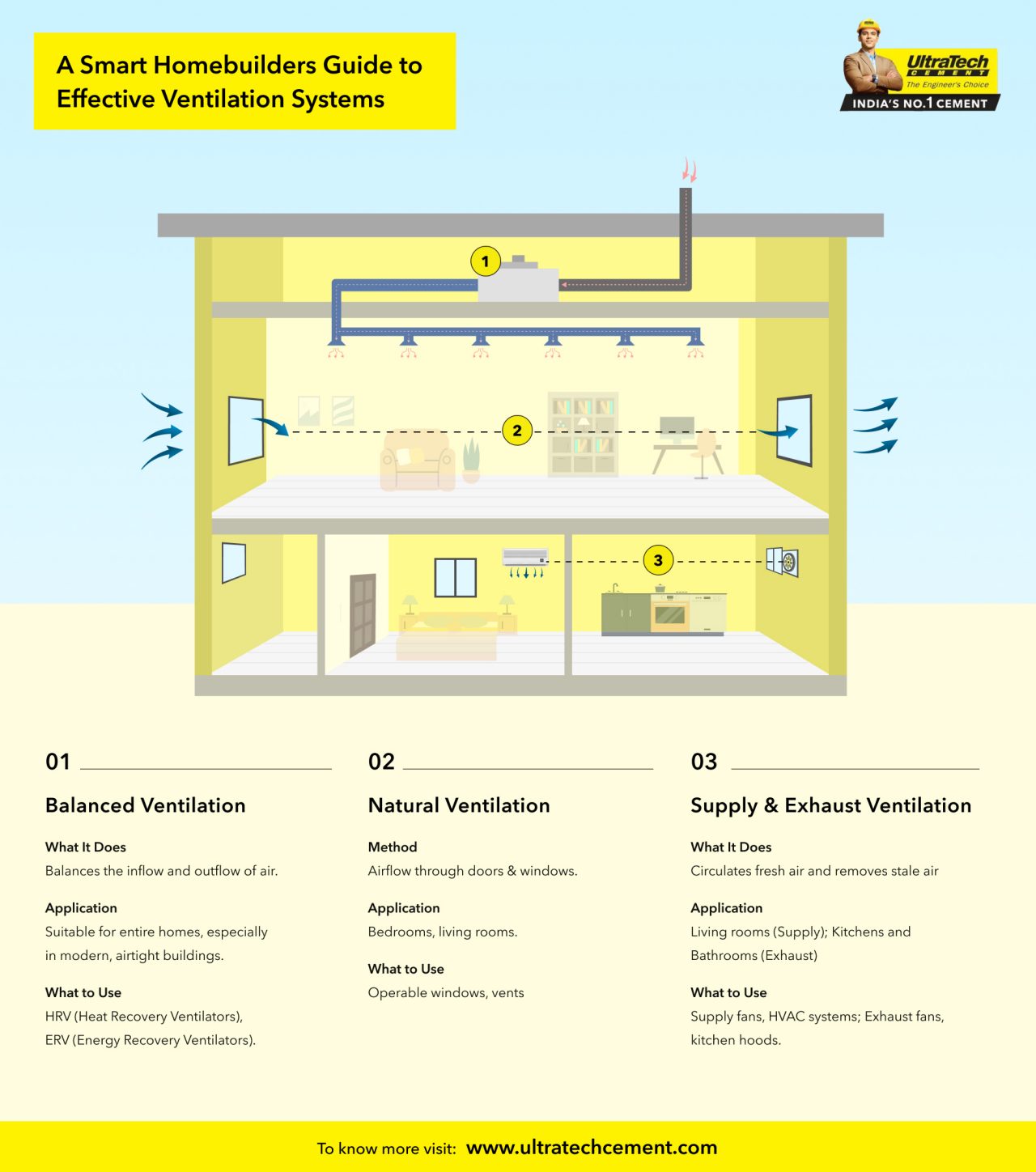Home Ventilation Melbourne: Cost-Effective Ways to Improve Airflow
Wiki Article
Recognizing the Significance of Home Ventilation for a Healthier Living Atmosphere
Home ventilation plays an important duty in preserving a healthy living environment. It promotes the exchange of indoor and exterior air, which is very important for enhancing air quality. Without appropriate air flow, homes can come to be reproducing premises for allergens and pollutants. The repercussions of inadequate air blood circulation can be considerable. This raises the questions of exactly how house owners can properly apply ventilation strategies to protect their health and wellness. Recognizing these techniques is critical.
The Basics of Home Air Flow
Home ventilation offers as a vital element of interior air top quality and comfort. It includes the process of exchanging stale indoor air with fresh outdoor air, consequently lowering humidity and managing temperature level. Correct air flow systems can include natural approaches, such as open windows and vents, along with mechanical systems, such as exhaust followers and air exchangers. Efficient home ventilation helps avoid issues like interior mold development and the accumulation of dangerous fragments. It additionally improves total power effectiveness, as well-ventilated areas can preserve comfortable temperatures with much less reliance on heating and cooling systems. Comprehending the essentials of home ventilation is essential for house owners seeking to develop a much healthier living setting on their own and their families.
Typical Resources of Indoor Air Pollution

Although lots of might not realize it, interior air contamination can stem from numerous resources within a house. Typical contributors include unstable organic compounds (VOCs) produced from paints, solvents, and cleansing products. Home home appliances, such as gas ranges and fire places, can release dangerous gases like carbon monoxide gas and nitrogen dioxide. In addition, mold and mildew and mold grow in damp locations, releasing spores that affect air quality. Family pet dander, allergen, and plant pollen can build up inside your home, further intensifying contamination levels. Cigarette smoking inside creates poisonous chemicals that stick around in the air. Lastly, building products, including asbestos and formaldehyde, can off-gas unsafe materials. Recognizing these sources is crucial for keeping a much healthier interior atmosphere and promoting reliable air flow techniques.
Wellness Consequences of Poor Air Flow
Interior air pollution can have significant wellness ramifications, especially when air flow is poor. Poor ventilation can bring about the build-up of damaging contaminants, such as unstable natural compounds, mold and mildew, and particle issue. This accumulation might lead to breathing concerns, consisting of bronchial asthma, allergies, and persistent obstructive lung illness. People might experience symptoms like migraines, fatigue, and irritation of the eyes, nose, and throat. Susceptible populaces, such as kids and the senior, go to greater danger for serious health and wellness effects. Lasting direct exposure to improperly ventilated environments can likewise add to a lot more serious problems, consisting of heart diseases. Ensuring correct air flow is essential for keeping a healthy living setting and minimizing the danger of wellness problems linked with interior air contamination.Efficient Air Flow Methods for Your Home
Correct air flow is crucial for preserving a healthy and balanced interior atmosphere, and implementing efficient methods can significantly boost air quality. Home owners can start by ensuring that exhaust followers are set up in bathrooms and kitchens to eliminate excess dampness and odors. Opening home windows regularly enables fresh air to circulate, particularly during mild weather. Furthermore, making use of air cleansers with HEPA filters can assist catch air-borne toxins. For homes with home heating and cooling systems, keeping a/c systems and changing filters consistently is crucial for peak efficiency. Incorporating natural ventilation strategies, such as cross-ventilation, can also improve airflow. Finally, securing any type of leakages in windows and doors protects against undesirable drafts, which can interfere with regulated air movement, eventually bring about boosted indoor air high quality and comfort.Preserving Ideal Air Quality Year-Round
To keep ideal air top quality year-round, house owners should take on a positive approach to managing their interior environment. Routinely monitoring interior air top quality is vital; this includes monitoring for pollutants such as dust, mold and mildew, and unstable natural compounds (VOCs) Carrying out effective air Home Ventilation Melbourne flow systems, such as exhaust followers and air purifiers, can substantially decrease air-borne contaminants. In addition, routine maintenance of heating and cooling systems warranties peak efficiency and air circulation. Property owners should likewise take into consideration humidity degrees, as too much dampness can cause mold growth. Seasonal adjustments may necessitate changes in ventilation approaches to fit differing outdoor air high quality. By focusing on these practices, property owners can produce a much healthier space, promoting general wellness for all owners throughout the year.Frequently Asked Concerns
Just How Can I Inform if My Home Demands Much Better Air Flow?
To establish if a home needs better ventilation, one ought to observe indications such as consistent humidity, mold growth, musty smells, condensation on home windows, or raised allergic reaction signs, suggesting insufficient air flow and potentially poor indoor air top quality.What Are the Indicators of Poor Indoor Air Top Quality?

Can Houseplants Improve Indoor Air High Quality Successfully?
The efficiency of houseplants in improving indoor air top quality is questioned. While some research studies suggest they can absorb contaminants and generate oxygen, their general impact might be very little compared to correct air flow and air filtration systems.How Usually Should I Adjustment My Air Filters?
The frequency of air filter changes generally relies on use and filter type. Generally, it is suggested to replace filters every 3 months, though families with allergies or animals may call for even more regular modifications for optimal efficiency.Are There Any Kind Of Certain Ventilation Equipments for Allergy Sufferers?
Several ventilation systems, such as HEPA-filtered devices, efficiently lower allergens airborne. Home Ventilation Melbourne. These systems catch dirt, pet, and plant pollen dander, offering allergic reaction sufferers with a cleaner, healthier interior setting while handling air top quality effectively
It facilitates the exchange of outside and interior air, which is essential for boosting air quality. Home ventilation offers as a vital part of indoor air top quality and comfort. It involves the process of exchanging stagnant interior air with fresh outside air, therefore decreasing moisture and regulating temperature level. Interior air contamination can have significant health implications, especially when air flow is poor. Correct air flow is essential for preserving a healthy and balanced interior setting, and carrying out reliable approaches can greatly enhance air quality.
Report this wiki page